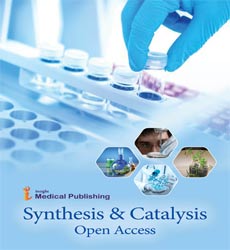Abstract
Silica with 3D Mesocellular Pore Structure Used as Support for Cobalt Fischer-Tropsch Catalyst
The typical MCM-41 and SBA-15 silica types were modified in order to expand their pores by addition of a swelling agent at mild conditions. The MCM- 41, SBA-15 and Pore-expanded (PE) mesoporous silicas, i.e., PE-SBA-15 and PE-MCM-41 were synthesized by the atrane route and used as supports in the preparation of cobalt Fischer–Tropsch catalysts. The synthetized silicas presented a homogeneous morphology with narrow pore size distribution of 1D, 2D and 3D pore structures. The most interesting pore structure and size was presented by the PE-SBA-15 silica, which showed a 3D spherical cell structure of 30 nm diameter interconnected by small window pores of 7 nm of diameter. These supports were used in cobalt catalyst preparation. The characterization results showed that the pore structure and pore size affected the growth of cobalt oxide particles and cobalt-silica interaction. These factors played an important role on the cobalt dispersion and Degree of Reduction (DOR). Co/SBA-15 and Co/PE-SBA-15 catalysts presented similar physicochemical properties related with the Co3O4, but the pore size and structure of the support was different. All the catalysts were tested in Fischer-Tropsch reaction at close to industrial conditions. Co/PE-SBA-15 catalyst showed the best CO conversion and selectivity to long-chain hydrocarbons, results attributed to the higher degree of reduction of cobalt but mainly to the open network with 3D structure pores of the silica support which reduced the diffusion limitations of the reactants and products.
Author(s): Pardo-Tarifa F, Montes V, Claure M, Cabrera S, Kusar H, Marinas A and Boutonnet M
Abstract | Full-Text | PDF
Share This Article
Google Scholar citation report
Citations : 94
Synthesis and Catalysis: Open Access received 94 citations as per Google Scholar report
Abstracted/Indexed in
- Google Scholar
- China National Knowledge Infrastructure (CNKI)
- Publons
- Secret Search Engine Labs
- Euro Pub
Open Access Journals
- Aquaculture & Veterinary Science
- Chemistry & Chemical Sciences
- Clinical Sciences
- Engineering
- General Science
- Genetics & Molecular Biology
- Health Care & Nursing
- Immunology & Microbiology
- Materials Science
- Mathematics & Physics
- Medical Sciences
- Neurology & Psychiatry
- Oncology & Cancer Science
- Pharmaceutical Sciences

